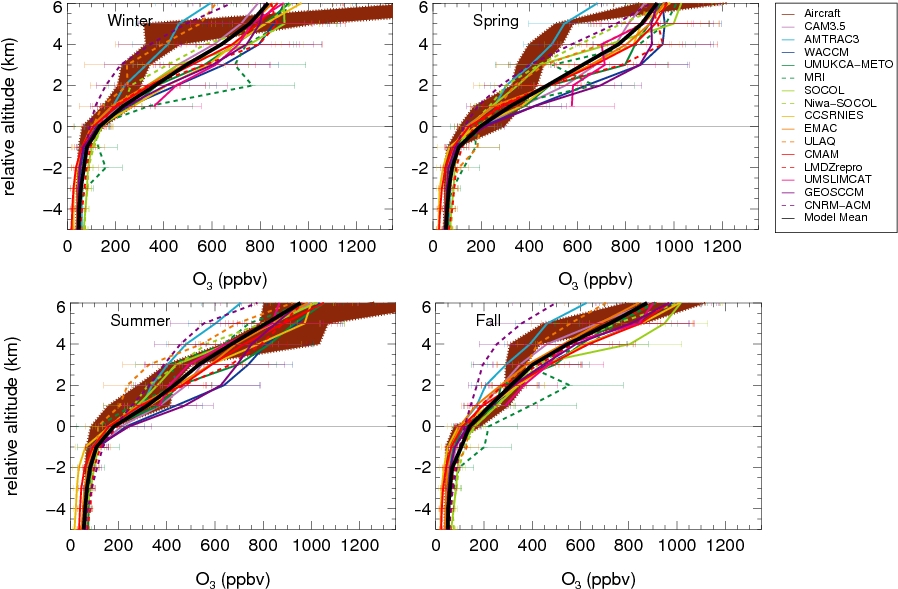Chemistry Climate Model Validation (CCMVal) Project
The CCMVal project is a project of the Stratospheric Processes and their Role in Climate (SPARC) initiative. CCMVal focuses on process oriented diagnostics for chemistry climate models. These models, which have the key feature that chemical constituents interact with radiation, and resolve the stratosphere, are used for predictions of the future state of the stratospheric ozone layer. CCMVal has recently concluded it's second model intercomparison round (CCMVal-2) in support of the 2011 WMO Scientific Assessment of Ozone Depletion. A comprehensive CCMVal report on chemistry climate models is being published in 2010. One chapter of this report focuses specifically on the UTLS.
The NCAR UTLS project is a major contributor to the CCMVal project. NCAR develops and run the Whole Atmosphere Community Climate Model (WACCM), a chemistry climate model that is part of CCMVal. NCAR UTLS scientists have been heavily involved in the CCMVal project, as lead authors on both the Chemistry and UTLS chapters, as well as contributors to several chapters.
In particular, the assessment of chemistry-climate models in the UTLS concludes that global models are able to represent the chemistry and transport in the UTLS region, with some deficiencies. The figure below shows profiles of the seasonal cycle of ozone from nearly 18 chemistry climate models along with a climatology based on aircraft observations. The vertical axis is the difference from the extratropical tropopause. The models are generally able to capture the ozone gradient across the extra-tropical tropopause quite well, including its seasonal cycle.
The report also assesses simulated trends in the UTLS to 2100.

Figure. Ozone profiles in tropopause relative altitude (km) for four seasons. The distribution of the aircraft data is represented by 25-75 percentiles (black shading) and the 5 and 95 percentiles (dotted lines). Models are represented as median (color lines) and the 25 -75 percentiles (error bars). From Gettelman and Hegglin, 2010, Chapter 7 of the SPARC CCMVal Report on Chemistry Climate Models, Eyring et al eds.
